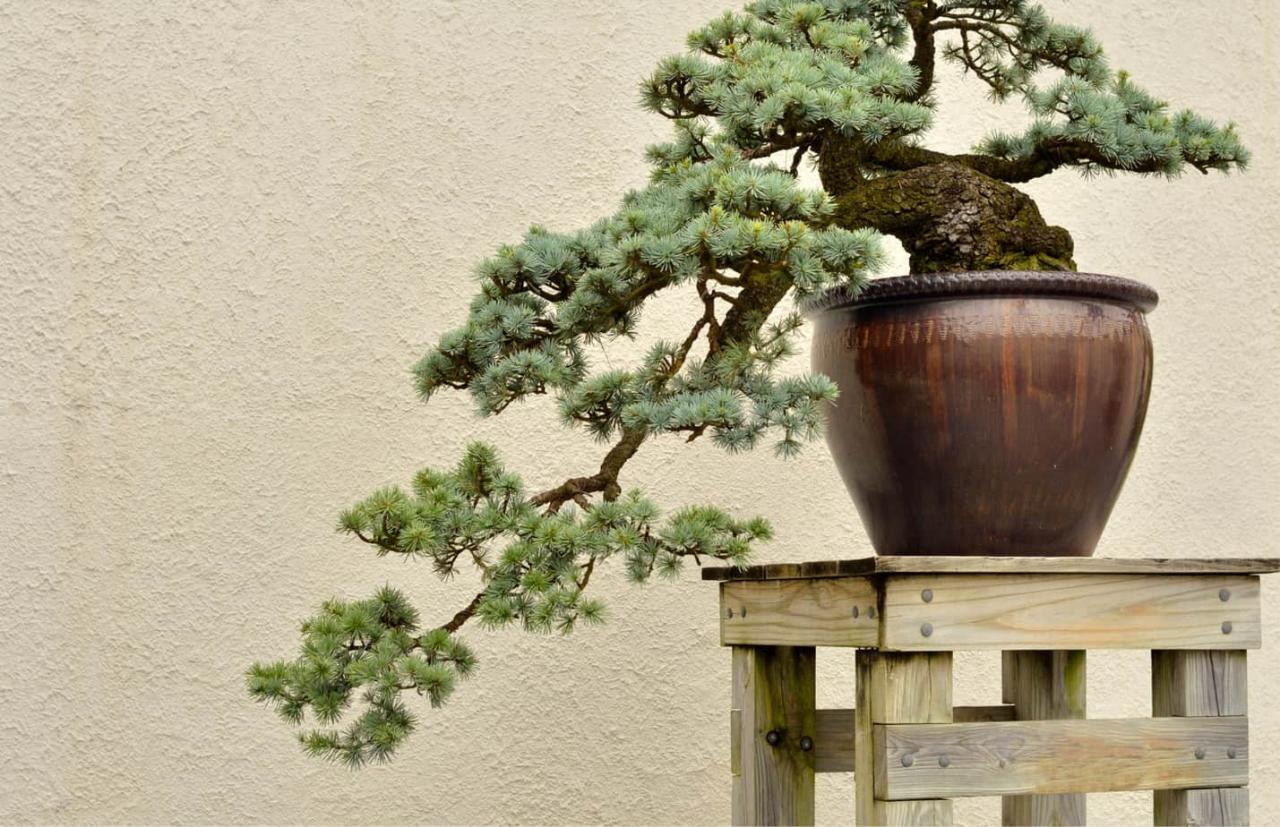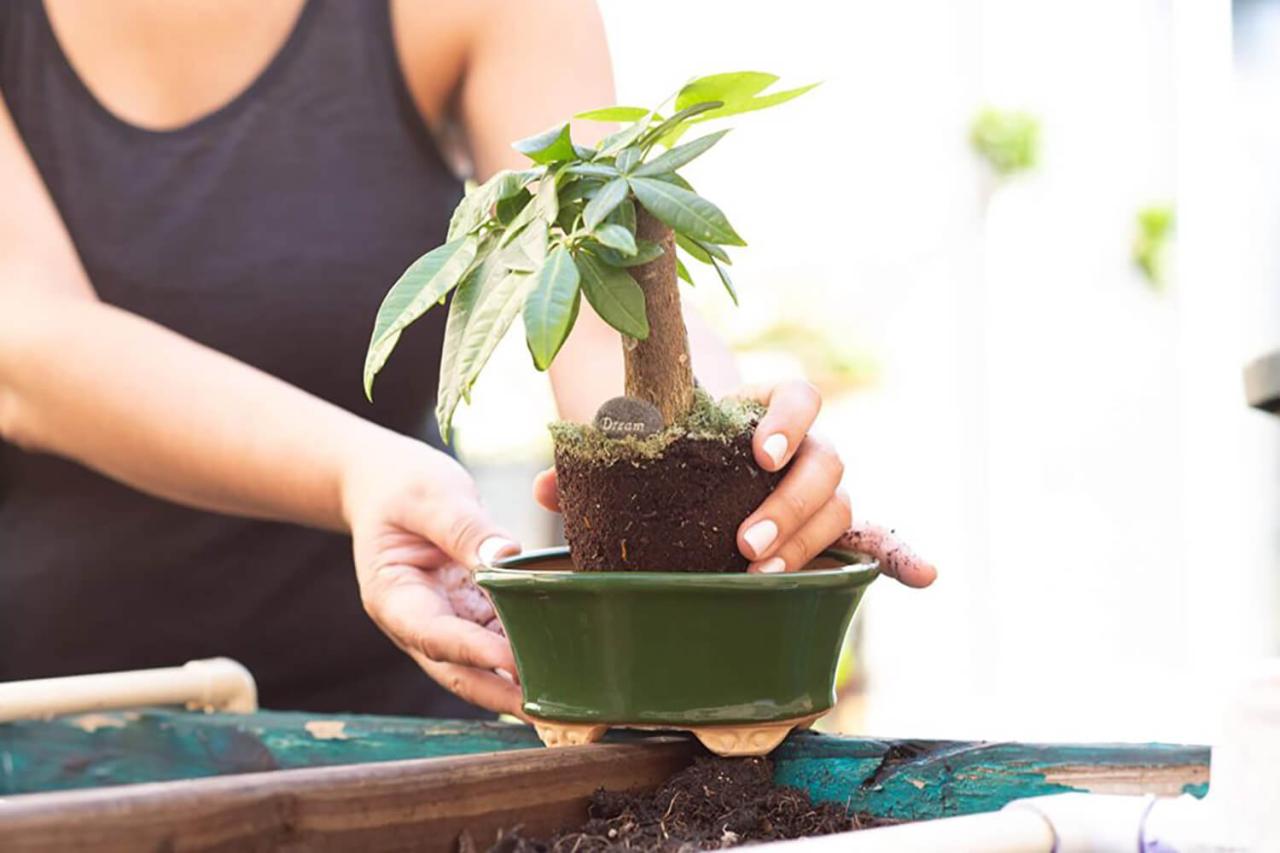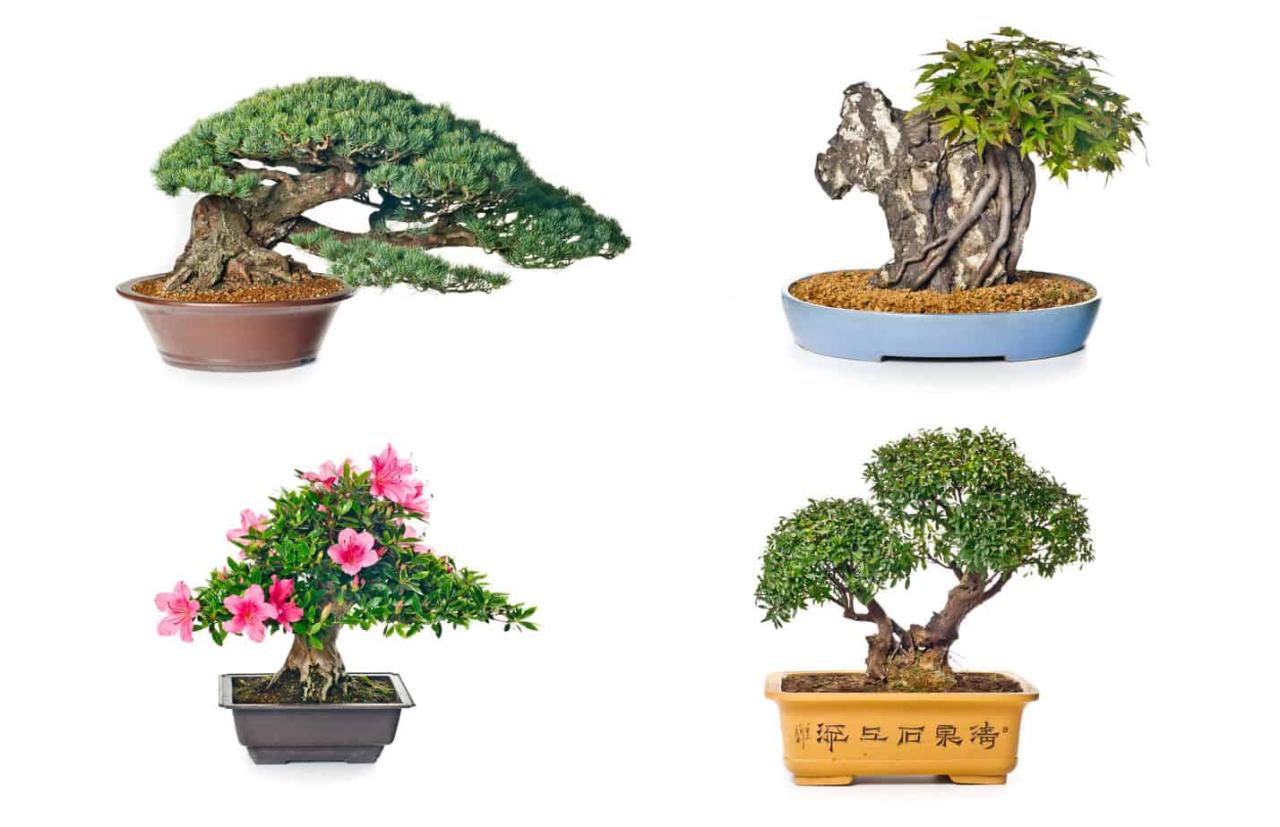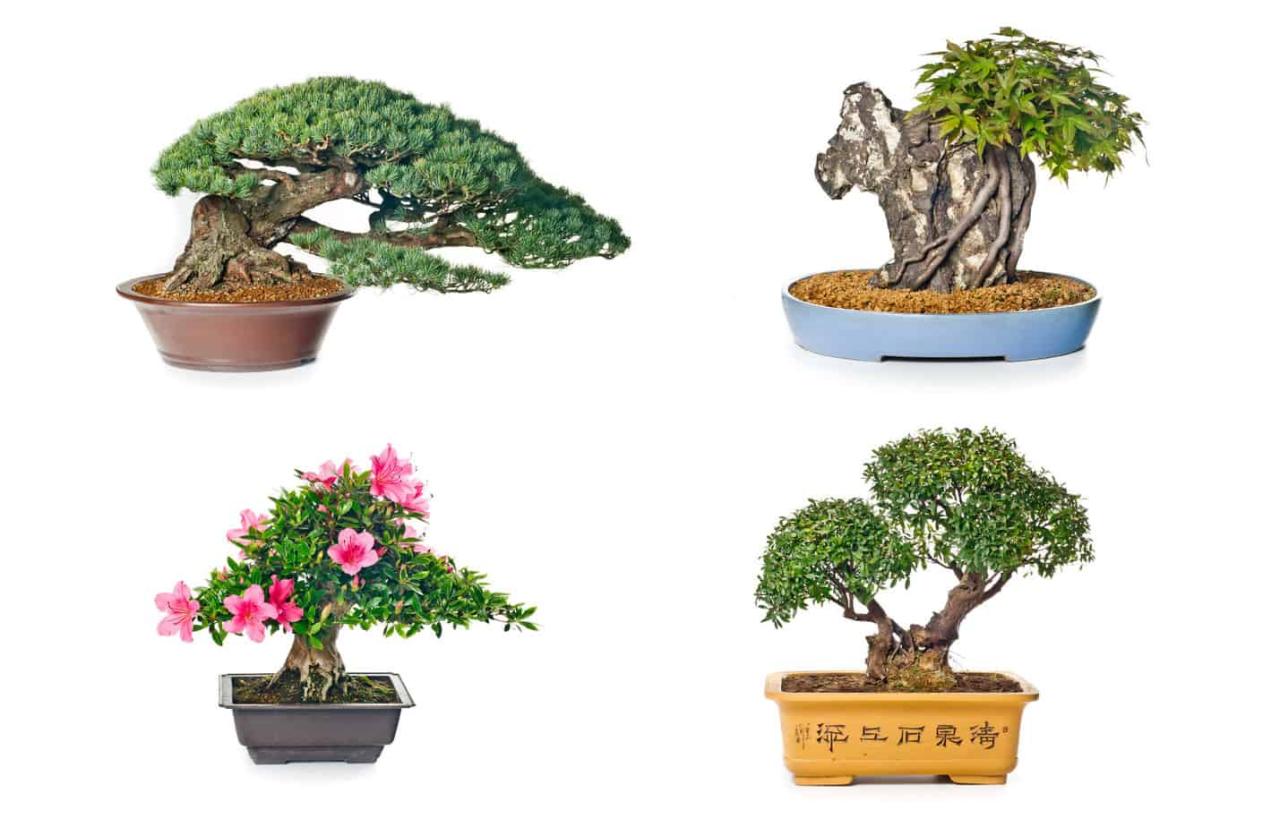Top 10 Tips for Selecting the Perfect Bonsai Pot: The bonsai pot isn’t just a container, it’s an integral part of the art form, influencing the tree’s growth, style, and overall aesthetic appeal. Choosing the right pot is crucial to showcasing the bonsai’s beauty and ensuring its health.
This guide delves into the key considerations for selecting the perfect pot for your bonsai tree, covering everything from understanding the basics of pot materials and styles to practical tips for maintenance and finding the ideal pot.
From understanding the significance of pot materials and styles to choosing the right size and shape for your bonsai, this comprehensive guide will equip you with the knowledge you need to select the perfect pot for your miniature masterpiece. Let’s explore the world of bonsai pots and discover how to elevate your bonsai’s beauty and vitality.
Matching the Bonsai Tree to the Pot

Selecting the right pot for your bonsai tree is crucial for its overall health and aesthetic appeal. The pot should not only complement the tree’s style but also provide the necessary space for its roots to grow and thrive.
Pot Size and Bonsai Tree Size
The pot size should be proportionate to the bonsai tree’s size. A general rule of thumb is that the pot’s diameter should be roughly one-third to one-half the width of the tree’s canopy. For example, a bonsai tree with a canopy diameter of 12 inches would ideally be planted in a pot with a diameter of 4 to 6 inches.
Choosing the perfect bonsai pot is crucial for your tree’s health and aesthetic appeal. Beyond the visual appeal, understanding the relationship between the pot and the tree is key. To ensure the right fit, you need to consider the pot’s size and shape, which are intimately linked to the bonsai’s growth and development.
For a comprehensive guide on selecting the right size and shape, check out this informative article: Bonsai Pots: How to Select the Right Size and Shape. Once you’ve mastered the fundamentals, you’ll be well-equipped to confidently navigate our Top 10 Tips for Selecting the Perfect Bonsai Pot.
However, consider the specific needs of the tree species and its growth rate.
Bonsai Tree Styles and Ideal Pot Shapes, Top 10 Tips for Selecting the Perfect Bonsai Pot
Different bonsai tree styles often call for specific pot shapes to enhance their aesthetic appeal. Here are some examples:
- Formal Upright:Rectangular or oval pots with a wide base are ideal for formal upright styles, as they create a sense of stability and grounding.
- Informal Upright:Rounded or slightly irregular pots complement the more natural and flowing lines of informal upright styles.
- Cascade:Deep, narrow pots with a wide opening are best suited for cascade styles, allowing the branches to gracefully cascade over the pot’s edge.
- Slanting:Shallow, oval pots with a slightly raised rim are ideal for slanting styles, as they emphasize the tree’s dynamic angle.
- Windswept:Pots with a rounded or irregular shape can enhance the windswept style, suggesting the tree’s resilience against the elements.
Balancing the Bonsai Tree and Pot
Achieving balance in bonsai pot selection is crucial. This involves considering the tree’s overall appearance, including its shape, size, and style. The pot should complement the tree’s silhouette and enhance its visual impact.
“The pot should not compete with the tree but rather serve as a subtle backdrop, highlighting its beauty.”
For instance, a bonsai tree with a wide, spreading canopy might look best in a pot with a wider base, while a tree with a tall, slender trunk might be more suited to a taller, narrower pot. The goal is to create a harmonious relationship between the tree and the pot, where both elements work together to create a visually pleasing and balanced composition.
Exploring Pot Styles and Designs
Selecting the right pot for your bonsai is crucial for its aesthetic appeal and overall health. The pot serves as a miniature landscape, framing the bonsai and enhancing its visual impact. Beyond its functional role, the pot adds artistic value, reflecting the personality of the bonsai and the artist’s vision.
Bonsai Pot Styles
The shape and design of the bonsai pot play a significant role in the overall aesthetic. Various styles cater to different bonsai species and artistic expressions.
Style |
Features |
Characteristics |
|---|---|---|
Round |
Circular shape, symmetrical design |
Versatile, suitable for various bonsai styles, promotes a sense of balance and harmony. |
Rectangular |
Long and narrow, often with rounded corners |
Emphasizes the vertical growth of the bonsai, creates a sense of depth and perspective. |
Oval |
Elliptical shape, slightly elongated |
Adds a touch of elegance and sophistication, balances the bonsai’s form. |
Square |
Four equal sides, sharp corners |
Creates a strong, geometric presence, suitable for bold bonsai styles. |
Irregular |
Asymmetrical shape, with uneven edges |
Adds a touch of naturalism and spontaneity, complements bonsai with unique forms. |
Glaze Finishes
The glaze applied to the bonsai pot adds depth and texture, enhancing its visual appeal and influencing its practical properties.
Glaze Finish |
Aesthetic Appeal |
Practical Implications |
|---|---|---|
Matte |
Subdued, earthy, rustic |
Reduces glare, enhances the natural beauty of the bonsai. |
Glossy |
Shiny, reflective, elegant |
Amplifies light, adds vibrancy and depth, may require more maintenance to prevent dust accumulation. |
Crackled |
Textured, intricate, aged |
Creates a unique visual effect, adds depth and character, may be more prone to staining. |
Colored |
Vibrant, expressive, bold |
Enhances the bonsai’s visual impact, can be used to create contrasts or complement the tree’s colors. |
Color and Texture
The color and texture of the bonsai pot play a crucial role in enhancing the bonsai’s visual impact. The color can be used to create contrasts or complement the tree’s colors, while the texture adds depth and interest. For example, a dark-colored pot can highlight the vibrant green foliage of a bonsai, while a textured pot can provide a backdrop for the tree’s delicate branches.
Considering Practical Aspects

While aesthetics play a crucial role in bonsai pot selection, practicality is equally important. Choosing a pot that caters to the bonsai’s needs and your own care routine can significantly impact the tree’s health and your overall bonsai experience.
Evaluating the Drainage System
A well-functioning drainage system is essential for bonsai health. Excess water can lead to root rot and other problems, so selecting a pot with adequate drainage is crucial.
- Examine the drainage holes:Ensure the pot has multiple, appropriately sized drainage holes. Small or insufficient holes can hinder water drainage, increasing the risk of root problems.
- Check the pot’s base:Look for a slightly raised base or a lip around the drainage holes. This prevents the pot from sitting directly on a surface, promoting better airflow and reducing the chances of waterlogging.
- Consider the pot’s material:Some materials, like terracotta, are naturally porous and allow for good drainage. However, glazed pots may require additional drainage measures, such as adding a layer of gravel to the bottom.
Ensuring Pot Stability
A stable bonsai pot is crucial to prevent accidental tipping and damage to the tree.
When selecting the perfect bonsai pot, consider factors like the tree’s size, style, and growth habits. The pot’s material, glaze, and drainage are also crucial. For an in-depth guide on choosing the right pot for your bonsai, be sure to check out our article on The Best Bonsai Pots for Indoor and Outdoor Trees.
By understanding these factors, you can find a pot that complements your bonsai and enhances its beauty.
- Assess the pot’s weight and shape:Heavier pots, especially those with a wide base, offer greater stability. Conversely, tall, slender pots can be more prone to tipping.
- Consider the bonsai’s size and weight:A large bonsai will require a heavier and wider pot for stability. Conversely, a smaller bonsai can be accommodated in a lighter, more delicate pot.
- Use a sturdy base or stand:For delicate or tall pots, consider using a stable base or stand to prevent tipping. This can also enhance the overall aesthetic appeal of the display.
Maintaining Cleanliness and Longevity
Proper maintenance ensures the longevity of your bonsai pot and protects the tree from potential harm.
- Regular cleaning:Clean the pot regularly to remove accumulated soil, algae, and debris. This prevents the buildup of harmful substances and promotes optimal drainage.
- Proper storage:During winter or when not in use, store the pot in a dry, clean environment to prevent damage and mold growth.
- Repairing damage:If the pot develops cracks or chips, repair them promptly to prevent further damage and maintain its structural integrity.
Final Conclusion: Top 10 Tips For Selecting The Perfect Bonsai Pot

Selecting the perfect bonsai pot is a journey of discovery, blending practicality with artistry. By understanding the nuances of pot materials, styles, and size considerations, you can find the ideal vessel to showcase the unique beauty of your bonsai tree.
Whether you’re a seasoned bonsai enthusiast or a curious beginner, this guide serves as a valuable resource to enhance your bonsai journey. Remember, the perfect pot is one that complements the tree, elevates its visual impact, and contributes to its long-term health and well-being.
Frequently Asked Questions
What are the most common bonsai pot materials?
The most common materials for bonsai pots are ceramic, wood, and plastic. Ceramic pots are popular for their durability and variety of styles, while wooden pots offer a natural and rustic aesthetic. Plastic pots are lightweight and affordable, but they may not be as visually appealing.
How do I know if a bonsai pot is the right size?
The ideal pot size should be proportionate to the bonsai tree, allowing for sufficient root space without being too large or small. The pot should be about one-third to one-half the width of the bonsai’s canopy.
What is the best way to maintain the cleanliness of a bonsai pot?
To maintain the cleanliness of your bonsai pot, regularly clean it with a mild soap solution and a soft brush. Avoid using harsh chemicals or abrasive cleaners that could damage the pot’s finish.
Where can I find high-quality bonsai pots?
You can find high-quality bonsai pots at specialty bonsai nurseries, online retailers, and art galleries. Look for reputable sellers with a good selection of pots in various styles and materials.
